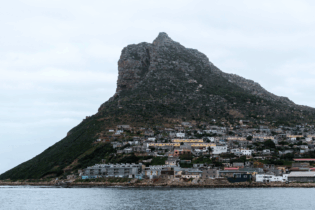Durban to Rosebank in just over an hour’s high-speed train travel time is something that could become a reality by 2030‚ discussions with China’s CSR Corporation at the Rail Africa exhibition and conference on Wednesday revealed.
This means that like commuters between London and northern France‚ who can enjoy the beach in the evenings after a tough day at the trading desk of a financial institution‚ South Africans could work in Gauteng and live in KwaZulu-Natal‚ reversing the long-established migration pattern of people leaving the coastal province to live in the inland province. The current CRH380A‚ which is designed to operate at 380 kilometres an hour (km/h)‚ has already achieved a speed of 416,6km/h on the Shanghai-Hangzhou Intercity High Speed Railway‚ while a next generation CSR prototype has already achieved 500km/h in test runs. “We have nine different types of high-speed rail sets‚ so we can adapt to almost any need‚” Ma Jianlei‚ CSR Corporation’s project manager overseas business division said. At present CSR has supplied 354 train sets‚ which comprise 2832 cars‚ out of a total order of 460 sets in China and is looking to expand its high-speed rail service to other countries‚ South Africa included. The South African Department of Transport has proposed a high-speed rail service linking Johannesburg and Durban in line with other countries such as China‚ France‚ Germany‚ Italy‚ Taiwan‚ and the UK. The world speed record for conventional high-speed rail is held by the V150‚ a special version of France’s TGV which reached 574.8km/h on a test run.The world speed record for magnetic levitation (Maglev) trains is held by the Japanese experimental MLX01 at 581km/h.
The Gautrain‚ which covers the distance between Rosebank and Pretoria in 30 minutes at a relatively sedate operational top speed of less than 200 km/h‚ has already transported 10 million passengers between June 2010 and June 2012‚ showing acceptance of this type of transport amongst commuters. High speed rail travel was pioneered in Japan. Just as in SA‚ one of the spurs was the hosting of an international sports event (the Tokyo 1964 Olympics‚ the 2010 Soccer World Cup in SA’s case). In October 1964 the Shinkansen‚ known as the Bullet Train in English‚ started operating between Tokyo and Osaka‚ a distance of 515km‚ which is just more than the distance (as the crow flies) between Avusa House and Durban’s beach. The road distance is about 600km. Not one single passenger has been killed in derailments or collisions‚ even though Shinkansen has transported the world’s current population of seven billion in the past 48 years. In May 2011‚ the Japanese government approved the construction of the first 286km of the Chuo Shinkansen maglev line‚ which will have an operating speed of 505km/h and will link Tokyo and Nagoya by 2027. The plan is to link it with Osaka by 2045. The maglev line would mean that the Tokyo to Osaka journey could be completed in just over one hour compared with the current two and half hours.







